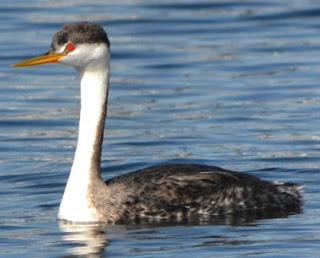Appearance:
Very large aerial waterbird
Smallest of the pelicans
Large, grayish bill with an expandable pouch on the bottom
Gray-brown back, rump and tail
Long, broad wings
Short tail
Immature: (above)
Gray-brown head and neck
White underparts
White head and neck
Blackish-brown breast and belly
Chestnet on back of neck during breeding
Reddish on underside of throat during breeding
Brown Pelicans are not commonly seen in Victoria. You hear of the odd report now and then but nothing like this year. Sightings of these birds are being reported daily in the vicinity of the Inner Harbour in downtown Victoria. As many as twenty-one were seen by one observer, according to the Rare Bird Alert. I spotted a group of eight of them today between Fisherman's Wharf and Laurel Point.
Talk of pelicans always reminds me of my mother saying "A funny old bird is a pelican. His beak can hold more than his bellican. Food for a week he can hold in his beak but I don't know how the hellican".
Learn more about the Brown Pelican.


.JPG)
.JPG)













.JPG)

.JPG)

.JPG)
